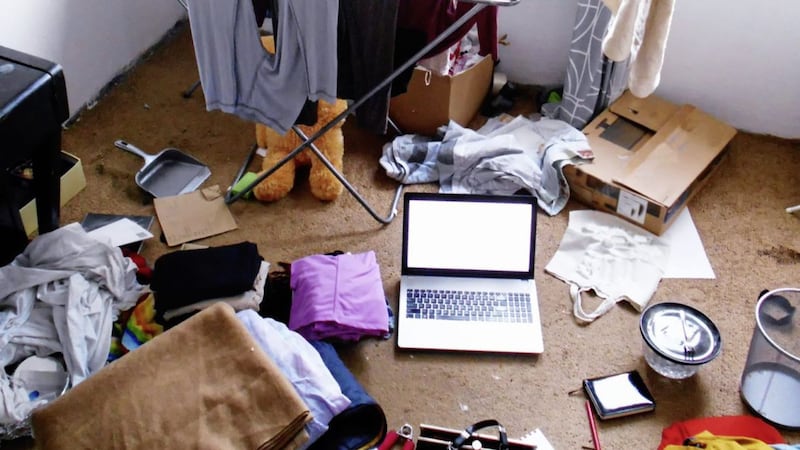We’re an acquisitive society, obsessed with the accumulation of stuff. Shopping tops our league of leisure activities.
Shelves and cupboards, drawers and wardrobes are crammed to overflowing and we keep adding more as novelty, fashion and technology dictate. Some few of us are disciplined enough to discard the old, worn-out or broken. Others generously pass on the little-worn, rarely-used or outdated, but most of us are keepers of things in case they might be useful, which is prudent – if you remember you’ve got them or where you put them when the need arises.
The sentimental and the pathologically lazy simply buy storage boxes and keep everything till the place resembles a warehouse. While aspiring to elegant minimalism we live in chaotic maximalism.
‘Hoarding’ is seen now as a certifiable illness with television documentaries made about sad people, victims of the habit, reduced to living in cramped spaces dominated by towers, bales and heaps of their belongings.
There are people who make a living out of ‘editing’ i.e. de-cluttering and re-organising the homes of the well-off, for which they charge exorbitant sums. The rest of us must do it ourselves – if we have the will, the time or the energy. Unfortunately, one needs a combination of all three, plus persistence and ruthlessness to accomplish it.
Now, in the spring of the year, some women are smitten by the urge. I find if I lie down, the notion passes.
Purely as research for this article I made a modest inventory of what needs tackling chez moi – namely, three walls of built-in wardrobes and one free-standing, 18 cupboards, 33 drawers and several storage boxes under every bed – all of the above full to capacity with gawdknowswhat. I’ve calculated that even if I started now and turned out just one drawer a day, it would take till Easter Sunday. Not that I’ve the least intention of doing so.
Brief reconnaissance of the cans and jars cupboard reveals a tin of chickpeas ‘best before’ 2010; the dry goods press boasts a fossilised pack of meringue nests marked Dec 2014; the herbs and spices shelf yields five-year-old oregano and the cutlery drawer four corkscrews, (one functioning) and a microwave egg-poacher, used once. The eggs exploded.
The Japanese are a minimalist race for whom three pussy-willow stems and a daffodil constitute a flower-arrangement. They’ve taken to advising the rest of the world how to achieve simplicity and serenity in our surroundings. Already, Marie Kondo’s opus on wardrobe editing and the origami of clothes storage is a best-seller – though personally I think life’s too short to fold socks.
Now comes NagisaTatsumi with ‘The Art of Discarding’ [Reader alert! It will induce severe kerniptions in those of an acquisitive disposition.] This is a woman devoid of sentimentality to whom the value of inheritance, the comfort of the familiar and the reassurance of ownership mean nothing. Hers is a sterile and strictly functional world. She advocates dispensing with what we don’t use, thereby “gaining a sense of freedom”.
Where would I be if I’d dumped my slow cooker, gathering dust for 25 years, now that magazines are suddenly full of slow cooker recipes. “Storage boxes are the enemy,” she avers. Nonsense – they’re serendipitous treasure chests to be rediscovered when you’ve forgotten their contents. She’s put an embargo on empty boxes too. What are we going to post our birthday and Christmas presents in? “Throw away books you haven’t read or won’t read again.” Sacrilege! The woman’s a philistine. As for clothes, her ‘three year rule’ dictates getting rid of anything unworn in that time, ignoring the fact that fashion is cyclical. I adopt the three decade rule and smile to see flowing flowerprint seventies dresses, high-necked Princess Di blouses, trenchcoats and capes are the acme of this season’s style and they’re all hanging in my roof-space.
I’ve tried this domestic de-cluttering caper before when re-decorating. It looked like we’d been burgled – so I put everything back. “Nothing is sacred,” observes MsTatsumi. “When you die, it’ll all be rubbish.” And somebody else’s problem. That’s fine by me….








